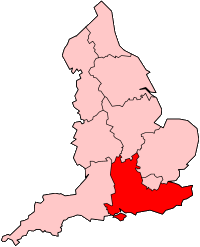Island Line, Isle of Wight
| Island Line | |||||||||||||||||||||||||||||||||||||||||||||||||||||||||||||||||||||||||||||||||||||||||||||||||||||||||||||||||||||||||||||||||||||||||||||||||||||||||||||||||||||||||||||||||||||||||||||||||||||||||||||||||||||||||||||||||||||||||||||||||||||||||
|---|---|---|---|---|---|---|---|---|---|---|---|---|---|---|---|---|---|---|---|---|---|---|---|---|---|---|---|---|---|---|---|---|---|---|---|---|---|---|---|---|---|---|---|---|---|---|---|---|---|---|---|---|---|---|---|---|---|---|---|---|---|---|---|---|---|---|---|---|---|---|---|---|---|---|---|---|---|---|---|---|---|---|---|---|---|---|---|---|---|---|---|---|---|---|---|---|---|---|---|---|---|---|---|---|---|---|---|---|---|---|---|---|---|---|---|---|---|---|---|---|---|---|---|---|---|---|---|---|---|---|---|---|---|---|---|---|---|---|---|---|---|---|---|---|---|---|---|---|---|---|---|---|---|---|---|---|---|---|---|---|---|---|---|---|---|---|---|---|---|---|---|---|---|---|---|---|---|---|---|---|---|---|---|---|---|---|---|---|---|---|---|---|---|---|---|---|---|---|---|---|---|---|---|---|---|---|---|---|---|---|---|---|---|---|---|---|---|---|---|---|---|---|---|---|---|---|---|---|---|---|---|---|---|---|---|---|---|---|---|---|---|---|---|---|---|---|---|---|---|
 A pair of Island Line Class 483s in London Underground livery entering the Ryde tunnel. | |||||||||||||||||||||||||||||||||||||||||||||||||||||||||||||||||||||||||||||||||||||||||||||||||||||||||||||||||||||||||||||||||||||||||||||||||||||||||||||||||||||||||||||||||||||||||||||||||||||||||||||||||||||||||||||||||||||||||||||||||||||||||
| Overview | |||||||||||||||||||||||||||||||||||||||||||||||||||||||||||||||||||||||||||||||||||||||||||||||||||||||||||||||||||||||||||||||||||||||||||||||||||||||||||||||||||||||||||||||||||||||||||||||||||||||||||||||||||||||||||||||||||||||||||||||||||||||||
| Type | Community railway | ||||||||||||||||||||||||||||||||||||||||||||||||||||||||||||||||||||||||||||||||||||||||||||||||||||||||||||||||||||||||||||||||||||||||||||||||||||||||||||||||||||||||||||||||||||||||||||||||||||||||||||||||||||||||||||||||||||||||||||||||||||||||
| Locale | Isle of Wight | ||||||||||||||||||||||||||||||||||||||||||||||||||||||||||||||||||||||||||||||||||||||||||||||||||||||||||||||||||||||||||||||||||||||||||||||||||||||||||||||||||||||||||||||||||||||||||||||||||||||||||||||||||||||||||||||||||||||||||||||||||||||||
| Termini |
Ryde Pier Head 50°44′19″N 1°09′37″W / 50.7385°N 1.1604°W Shanklin 50°38′02″N 1°10′47″W / 50.6338°N 1.1798°W | ||||||||||||||||||||||||||||||||||||||||||||||||||||||||||||||||||||||||||||||||||||||||||||||||||||||||||||||||||||||||||||||||||||||||||||||||||||||||||||||||||||||||||||||||||||||||||||||||||||||||||||||||||||||||||||||||||||||||||||||||||||||||
| Operation | |||||||||||||||||||||||||||||||||||||||||||||||||||||||||||||||||||||||||||||||||||||||||||||||||||||||||||||||||||||||||||||||||||||||||||||||||||||||||||||||||||||||||||||||||||||||||||||||||||||||||||||||||||||||||||||||||||||||||||||||||||||||||
| Owner | Network Rail | ||||||||||||||||||||||||||||||||||||||||||||||||||||||||||||||||||||||||||||||||||||||||||||||||||||||||||||||||||||||||||||||||||||||||||||||||||||||||||||||||||||||||||||||||||||||||||||||||||||||||||||||||||||||||||||||||||||||||||||||||||||||||
| Operator(s) | Island Line | ||||||||||||||||||||||||||||||||||||||||||||||||||||||||||||||||||||||||||||||||||||||||||||||||||||||||||||||||||||||||||||||||||||||||||||||||||||||||||||||||||||||||||||||||||||||||||||||||||||||||||||||||||||||||||||||||||||||||||||||||||||||||
| Depot(s) | Ryde depot | ||||||||||||||||||||||||||||||||||||||||||||||||||||||||||||||||||||||||||||||||||||||||||||||||||||||||||||||||||||||||||||||||||||||||||||||||||||||||||||||||||||||||||||||||||||||||||||||||||||||||||||||||||||||||||||||||||||||||||||||||||||||||
| Rolling stock | British Rail Class 483 | ||||||||||||||||||||||||||||||||||||||||||||||||||||||||||||||||||||||||||||||||||||||||||||||||||||||||||||||||||||||||||||||||||||||||||||||||||||||||||||||||||||||||||||||||||||||||||||||||||||||||||||||||||||||||||||||||||||||||||||||||||||||||
| Technical | |||||||||||||||||||||||||||||||||||||||||||||||||||||||||||||||||||||||||||||||||||||||||||||||||||||||||||||||||||||||||||||||||||||||||||||||||||||||||||||||||||||||||||||||||||||||||||||||||||||||||||||||||||||||||||||||||||||||||||||||||||||||||
| Line length | 8 1⁄2 miles (13.7 km) | ||||||||||||||||||||||||||||||||||||||||||||||||||||||||||||||||||||||||||||||||||||||||||||||||||||||||||||||||||||||||||||||||||||||||||||||||||||||||||||||||||||||||||||||||||||||||||||||||||||||||||||||||||||||||||||||||||||||||||||||||||||||||
| Number of tracks | Mixture of single and double track | ||||||||||||||||||||||||||||||||||||||||||||||||||||||||||||||||||||||||||||||||||||||||||||||||||||||||||||||||||||||||||||||||||||||||||||||||||||||||||||||||||||||||||||||||||||||||||||||||||||||||||||||||||||||||||||||||||||||||||||||||||||||||
| Track gauge | 4 ft 8 1⁄2 in (1,435 mm) standard gauge | ||||||||||||||||||||||||||||||||||||||||||||||||||||||||||||||||||||||||||||||||||||||||||||||||||||||||||||||||||||||||||||||||||||||||||||||||||||||||||||||||||||||||||||||||||||||||||||||||||||||||||||||||||||||||||||||||||||||||||||||||||||||||
| Electrification | 630V DC third rail | ||||||||||||||||||||||||||||||||||||||||||||||||||||||||||||||||||||||||||||||||||||||||||||||||||||||||||||||||||||||||||||||||||||||||||||||||||||||||||||||||||||||||||||||||||||||||||||||||||||||||||||||||||||||||||||||||||||||||||||||||||||||||
| Operating speed | 45 mph (72.4 km/h) | ||||||||||||||||||||||||||||||||||||||||||||||||||||||||||||||||||||||||||||||||||||||||||||||||||||||||||||||||||||||||||||||||||||||||||||||||||||||||||||||||||||||||||||||||||||||||||||||||||||||||||||||||||||||||||||||||||||||||||||||||||||||||
| |||||||||||||||||||||||||||||||||||||||||||||||||||||||||||||||||||||||||||||||||||||||||||||||||||||||||||||||||||||||||||||||||||||||||||||||||||||||||||||||||||||||||||||||||||||||||||||||||||||||||||||||||||||||||||||||||||||||||||||||||||||||||
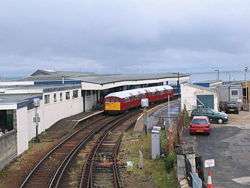
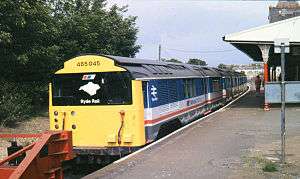
The Island Line is a railway line on the Isle of Wight, running 8 1⁄2 miles (13.7 km) from Ryde Pier Head to Shanklin on the Island's east coast. The line was electrified (630 V DC third rail) in 1967.[1][2] Trains connect with passenger ferries to Portsmouth Harbour at Ryde Pier Head, and these ferries in turn connect with the rest of the National Rail network. The line also connects to the Isle of Wight Steam Railway, a steam-operated heritage railway at Smallbrook Junction. For much of its length the line runs alongside the A3055, criss-crossing this road by means of the Ryde Tunnel and bridges at Rowborough, Morton Common, Lake Hill and Littlestairs.
History
The line from Ryde St John's Road to Shanklin was opened on 23 August 1864, having been built by the Isle of Wight Railway. In 1866 the line was extended through to Ventnor. The line was originally built as single track throughout, with passing loops provided at Brading, Sandown and Shanklin stations.
In 1880 the London and South Western Railway (LSWR) and London, Brighton and South Coast Railway (LBSCR) opened a jointly-owned line north from Ryde St John's Road. Under the direction of LBSCR Chief Engineer Frederick Banister,[3] the building of the extension included a new tunnel and a third Ryde Pier to enable the line to reach Ryde Pier Head, which provided a connection with the companies' ferry services. When the LBSC/LSWR joint line opened, it was as a double track section from Ryde St John's Road station through to Ryde Pier Head. There was a scissors crossover situated on Ryde Pier to allow trains to access all platforms. Sets of crossovers were installed at St John's Road to enable trains to change from the joint line's left-hand running to the single-track sections on the Isle of Wight Central Railway's Newport line and the Isle of Wight Railway's Shanklin line (now known as the Island Line).[4]
Southern Railway
Following the Railways Act 1921, the Island Line and the other railways on the Isle of Wight became part of the Southern Railway. In 1926, crossovers and a signalbox were installed at Smallbrook Junction to extend double track operation from St John's Road. However, the signalbox was used only in the summer when traffic levels were high. In winter, the two lines from Smallbrook to St. John's Road reverted to independent single track operation.[4]
In 1927,[4] the passing loops at Brading and Sandown were connected to form a second section of double track.
British Rail (1948–96)
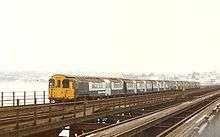
In 1948, the Southern Railway was nationalised, as part of British Railways, later British Rail. The line from Shanklin to Ventnor closed in April 1966. Steam trains were withdrawn from Ryde Pier on 17 September, and the whole line on 31 December 1966. While the line was closed, the trackbed in Ryde Tunnel was raised to reduce flooding and decrease gradients,[5] the rebuilding of Ryde Pier Head station was completed and Ryde Esplanade station was also substantially modified. The line reopened in March 1967 following its electrification.[6] In the 1980s, British Rail was sectorised and the line became part of the Network SouthEast sector. Services on the line were branded as Ryde Rail.
British Rail opened two new stations on the line. Lake station opened in 1987. Smallbrook Junction station opened in 1991, in co-operation with the Isle of Wight Steam Railway.
The double track between Sandown and Brading, along with the Brading passing loop, were removed in 1988. In 1989 the passenger service was branded as Island Line for the first time, as the name and logo was included on the "new" Class 483 trains' livery. However, this rebranding did not officially occur until 1994.[7]
Island Line franchise (1996–2007)
Following the privatisation of British Rail, the rights to run services on the line were put out to tender as a franchise. Uniquely on the National Rail network, the franchise agreement also required the successful bidder to maintain the railway line in addition to the stations and trains. Stagecoach Group were announced as the winner of the franchise and from October 1996 they operated passenger services under the name Island Line Trains.
In 2002 a form of Automatic Train Protection was installed on the line. This involved the refitting of tripcocks on trains and the associated train stop trackside equipment at signals. This system is almost identical to the one originally fitted to the trains when in service on the London Underground, although it is in use only at signals protecting single-track sections of the route.[8]
The Department for Transport designated the line as a community railway in March 2006, under reforms to help boost use of rural and branch lines in the UK rail network.[9]
South West Trains franchise (2007 - 2017)
From February 2007 the Island Line franchise was merged with the South West Trains franchise on the mainland. Stagecoach was announced as the winner of the expanded franchise and operated Island Line as a South West Trains subsidiary, but with the branding retained.[10] However, the Island Line name has been retained, styled as Island Line Trains, promoted as a separate division on the South West Trains website.
Island Line Trains have also repainted stations in a heritage scheme of cream and green, as part of a general station improvement package.[11]
South Western Railway franchise (since 2017)
In August 2017, the franchise was taken over by South Western Railway who have maintained the brand name.[12]
Future
Proposals 1990s
In the mid-1990s it was planned to reopen the line south of Shanklin, to the original terminus at Ventnor. However, this now seems unlikely to happen, due in part to the high costs involved.
Various other proposals have been put forward for the future of the railway line. These have included:
- Conversion of the line to an express bus road.[13]
- Connecting the line to the mainland rail network via a Solent tunnel.[14]
Proposals 2000s
It has previously been mentioned in the Isle of Wight Council's Local Transport Plan that any improvements to the railway should be made to ensure compatibility with the currently shelved South Hampshire Rapid Transit scheme. A suggestion in early 2009 was to reinstate the loop at Brading, thus allowing a 'Clock Face' timetable to encourage greater use. The outcome of this is still awaited.
The book Tube Trains on the Isle Of Wight listed several interesting earlier considerations to the future of the line being considered during its publication date of 2004. These included
- Replacement of the current stock with discarded London Transport stock of later builds, such as the 1972 stock and 1967 stock.
- De-electrification of the whole line and replacement of current stock with a new build of diesel units.
- Rebuilding the line into a light rapid-transit system (i.e. trams), enabling an extension into Shanklin town centre.
Proposals 2010s
The Railway Magazine reported that a meeting took place on 11 February 2015 which covered a relaxation of public railway regulation and safety standards as well as transferring the line to a Social Enterprise Company. According to RM, people present at the meeting included Claire Perry (Rail Minister), Andrew Turner MP, Nick Finney (Andrew Turner's transport advisor) and local councillors. News of the meeting has given rise to local controversy. [15]
In February 2016, a report into the future of the line, by transport expert Christopher Garnett, who was brought in by the Isle of Wight Council to take a look at the options available, unveiled proposals to convert the Island Line into a tram line. Under these proposals, to reduce costs, the line would be singled with passing places and the third rail replaced by overhead lines. It was reported that ten T-69 trams which were built in 1999, and had previously operated on the Midland Metro, could be re-used for this scheme.[16]
Other projects considered for the Island Line include flywheel or battery-powered trains, as well as the transfer of 1972 and 1973 stock to the Island. Two significant considerations for any new stock are that the stock must be able to pass under the tunnel at Ryde, as well as be able to stop at the sharp curve at Ryde Esplanade railway station without fouling the platform.[17]
Stations
In order from north to south:
| Station | Dist. | Opened | Closed | Notes |
|---|---|---|---|---|
| Ryde Pier Head | 0m 0ch | 12 July 1880 | connects with ferry services | |
| Ryde Esplanade | 0m 32ch | 5 April 1880 | ||
| Ryde St John's Road | 1m 19ch | 23 August 1864 | ||
| Smallbrook Junction | 2m 15ch | 20 July 1991 | served on steam operating days only | |
| Brading | 4m 55ch | 23 August 1864 | ||
| Sandown | 6m 41ch | 23 August 1864 | ||
| Lake | 7m 27ch | 11 May 1987 | ||
| Shanklin | 8m 29ch | 23 August 1864 | ||
| Wroxall | 15 September 1866 | 17 April 1966 | ||
| Ventnor | 15 September 1866 | 17 April 1966 |
Rolling stock
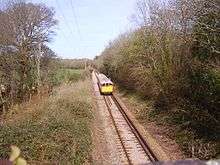
Due to the isolated and rural nature of the Isle of Wight's railways, rolling stock has tended to be made up from displaced older vehicles, rebuilt or modified as required. Following the work undertaken during the line's closure during the winter of 1966–67, the ceiling of Ryde Tunnel is 10 inches too low for standard National Rail vehicle types to clear.[5]
Since the reopening of the line in 1967, former London Underground Tube stock has been used. The initial trains were formed of so-called Standard Stock, made up into four and three-coach sets (with one spare vehicle, normally kept at Ryde depot), designated "4-VEC" and "3-TIS" in the British Rail Southern Region electric multiple unit classification system. (The classification letters were a pun on the Roman name for the island, Vectis, also reflected in the name of the island's nationalised bus company, Southern Vectis, which was once partially railway-owned.[18]) Under the British Railways TOPS rolling stock classification system (introduced in 1968 for locomotives and later extended to multiple unit vehicles), these units eventually became Class 485 and Class 486. The cars transferred to the island were built at various dates between 1923 and 1934, and thus maintained a somewhat unwelcome tradition of providing the island's railways with among the oldest rolling stock running anywhere on the British railway system. By 1992[19] these units had been replaced by newly refurbished London Underground 1938 Stock, designated Class 483 by British Rail. The stock is maintained at Ryde St John's Road depot.
Annual season tickets
Because the Isle of Wight is within the Network SouthEast area, annual season tickets issued to and from its stations are issued as Gold Cards. A ticket from Ryde Esplanade to Ryde St Johns Road was for many years the cheapest annual ticket in the area, and even though many holders of such tickets never use them for the intended journey, the discount obtained over the year (one-third off travel during Off-Peak hours in the Gold Card area) may amply repay the cost of the ticket[20]. When the Gold Card area was extended to include the West Midlands in January 2015,[21] the Ryde ticket was undercut by a similar short-distance ticket between Lichfield City and Lichfield Trent Valley.[22]
Passenger numbers
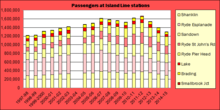
After privatisation, passenger numbers rose steadily from an estimated 1.21 million in 1997–98 to an estimated 1.61 million in 2006–07.[23]
After the merger of the Island Line and South West Trains franchises in 2007, Island Line passenger numbers fell slightly from an estimated 1.61 million in 2006–07 to an estimated 1.53 million in 2009–10. They peaked again at an estimated record 1.67 million in 2011–12, but since then have fallen rapidly to an estimated 1.31 million in 2014–15. This is the lowest annual estimate since 1998–99, and suggests passenger numbers have fallen by 22% in the last four years.[23]
The figures below are the number of passengers on the line from the year beginning April 2002 to the year beginning April 2013.
Smallbrook Junction has no road or footpath access and is normally open only on days when the connecting Isle of Wight Steam Railway is operating.
| Station usage | ||||||||||||||
|---|---|---|---|---|---|---|---|---|---|---|---|---|---|---|
| Station name | 2002–03 | 2004–05 | 2005–06 | 2006–07 | 2007–08 | 2008–09 | 2009–10 | 2010–11 | 2011–12 | 2012–13 | 2013–14 | 2014–15 | 2015–16 | 2016–17 |
| Ryde Pier Head | 116,652 | 121,387 | 116,812 | 149,226 | 193,714 | 210,604 | 210,604 | 235,156 | 223,542 | 217,272 | 209,734 | 218,060 | 218,410 | 210,006 |
| Ryde Esplanade | 431,636 | 453,314 | 456,944 | 489,372 | 442,861 | 396,358 | 360,650 | 392,020 | 364,780 | 328,366 | 301,660 | 289,574 | 281,344 | 277,176 |
| Ryde St John's Road | 140,242 | 160,891 | 175,208 | 178,869 | 178,914 | 190,796 | 200,976 | 240,046 | 251,694 | 229,450 | 202,188 | 184,924 | 180,220 | 179,822 |
| Smallbrook Junction | 2,995 | 3,087 | 2,716 | 2,965 | 4,363 | 9,672 | 10,170 | 11,472 | 11,478 | 10,832 | 11,408 | 11,230 | 12,134 | 12,768 |
| Brading | 73,546 | 66,932 | 69,074 | 68,841 | 60,680 | 65,794 | 61,406 | 63,872 | 67,840 | 60,540 | 55,594 | 50,954 | 43,846 | 48,500 |
| Sandown | 244,876 | 242,564 | 254,040 | 265,499 | 264,784 | 264,126 | 256,890 | 271,282 | 297,722 | 273,118 | 240,766 | 203,143 | 194,276 | 183,488 |
| Lake | 78,279 | 77,995 | 76,364 | 71,465 | 69,350 | 67,162 | 67,584 | 67,656 | 77,772 | 71,566 | 61,840 | 53,006 | 42,310 | 53,786 |
| Shanklin | 329,887 | 341,826 | 345,020 | 382,842 | 368,776 | 358,658 | 338,612 | 345,844 | 373,006 | 352,134 | 318,410 | 294,698 | 293,654 | 291,346 |
| The annual passenger usage is based on sales of tickets in stated financial years from Office of Rail Regulation statistics. The statistics are for passengers arriving and departing from each station and cover twelve month periods that start in April. Please note that methodology may vary year on year. | ||||||||||||||
See also
References
- ↑ "Southern Electric Fleet Review Summer 2004". Southern Electric Group. Archived from Southern Electric Group Historical Features Index the original Check
|url=value (help) on 23 February 2013. - ↑ "Southern Electric History and Infrastructure (Part 4)". Southern Electric Group.
- ↑ "Federick Dale Banister". Grace's Guide. Retrieved 10 February 2013.
- 1 2 3 Hardy 2003, p. 9.
- 1 2 "1938 tube stock on the Isle of Wight". squarewheels.org.uk. Retrieved 26 August 2007.
- ↑ Hardy 2003, pp. 19–20, 23.
- ↑ Hardy 2003, p. 75.
- ↑ Hardy 2003, p. 79.
- ↑ "Island's new community rail route". BBC News. 24 March 2006.
- ↑ "Stagecoach wins railway franchise". BBC News. 22 September 2006. Retrieved 25 September 2007.
- ↑ "Spruce up for Island Line stations". South West Trains. Retrieved 3 September 2007.
- ↑ First/MTR joint venture wins South Western franchise Railway Gazette International 27 March 2017
- ↑ "Buses on Rail Lines No Easy Answer". Isle of Wight County Press. 22 April 2005. Retrieved 22 July 2008.
- ↑ "Tram Link Idea Wins Poll Approval". Isle of Wight County Press. 11 April 2008. Retrieved 22 July 2008.
- ↑ Marsh, Phil (November 2015). "Controversy raging over proposals for Island Line". The Railway Magazine. 161 (1376): 8.
- ↑ "IS THE FUTURE TRAMS AND STEAM TRAINS INTO RYDE?". islandecho.co.uk. Island Echo. Retrieved 18 February 2016.
- ↑ Anon (26 March 2018). "Third Ryde Tube: Transfer Troublesome". London Reconnections. London Reconnections. Retrieved 27 March 2018.
- ↑ Witton, Alan M.; Telfer, R.L., eds. (March 1977). Fleetbook 11: Buses of South-East England. Manchester: A.M. Witton. p. 61. ISBN 0-86047-111-X.
- ↑ Hardy 2003, p. 46.
- ↑ "Any more routes to cheaper train travel?". The Guardian. Retrieved 19 July 2018.
- ↑ "Gold Card Benefits extended". Modern Railways. Retrieved 30 January 2015.
- ↑ "Cut the cost of rail travel". Rail Future. Retrieved 19 July 2018.
- 1 2 Office of Rail and Road data: see bar chart
Sources
- Hardy, Brian (2003). Tube Trains on the Isle of Wight. Harrow Weald, Middlesex: Capital Transport. ISBN 1-85414-276-3.
External links
| Wikimedia Commons has media related to Island Line. |
Route map:

